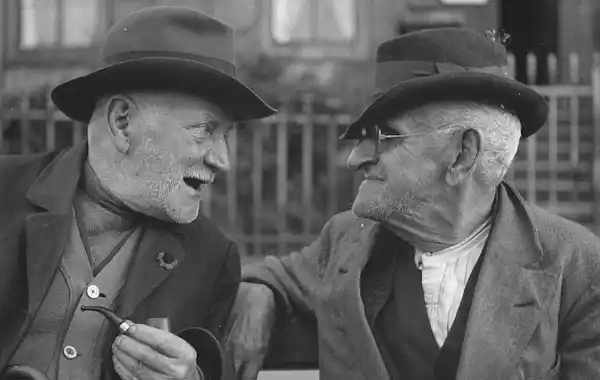Cynthia Brown and Mary Stewart of the Oral History Society present their top tips for recording family memories to enrich your family tree.
Cynthia Brown, oral historian and trustee, Oral History Society and Mary Stewart, curator of oral history, British Library and trustee, Oral History Society, present their top tips for recording family memories to enrich your family tree. For family tree news, views and competitions, sign up to our free e-newsletter.
Oral history is a wonderful addition to any family history record and can really bring any documentary material alive.
1. Training
One of the first things to think about is to get some training – there is far more to interviewing someone about the past than you might think. The Oral History Society (OHS) and British Library run courses across the country, from one-day introductory courses, to more advanced sessions in digital editing skills and recording video oral histories. For more information, visit the Oral History Society's website.
2. Equipment
Make sure you have the best recording equipment for your budget. As a rule of thumb, the cheaper the recorder the less likely it is to make a decent recording. It may also record in a file format that will be difficult to access in the future. There is information in the practical advice section of the OHS website. The British Library oral history team also provides guidance about recording equipment. For details, send an e-mail.
 3. Preparation
3. Preparation
What do you want to find out? One good way to think about your questions is to ask yourself, “What would I ask person X about the family if s/he were still alive?” Although you might want to find out new information and facts, oral history’s strength is to uncover the thoughts, feelings and motivations of interviewees. Remember to ask open questions as these are more likely to get rich descriptions in the interviewee’s own words about a person, place or theme.
You also need to remember that interviewees often reveal thoughts, memories and insights that they haven’t talked about before. This may mean that you might find out information and family secrets that could potentially be distressing to you or other members of the family.
 4. Discussions
4. Discussions
We suggest that you have a discussion before you start the interview about the purpose of the recording, how it will be stored (either by you or in an archive) and how you plan to use it. You should also ask the interviewee to sign a form so they can give their informed consent to its use. For more information about this please refer to the informed consent section of the OHS website.
5. Afterwards
When you have finished the recording, listen back to the interview, summarising the main topics and people that are discussed. You can also create a word for word transcript of the recording, but this takes a lot of time!
You also need to think about how you will preserve your recording to ensure it is available for future use. All of the issues above are included in the Introduction to Oral History training course run by the OHS. For more information on this and more specific advice, visit the OHS site.
(images: archive photo copyright deutsche fotohek; microphone copyright Dennis Hill)








.jpg)